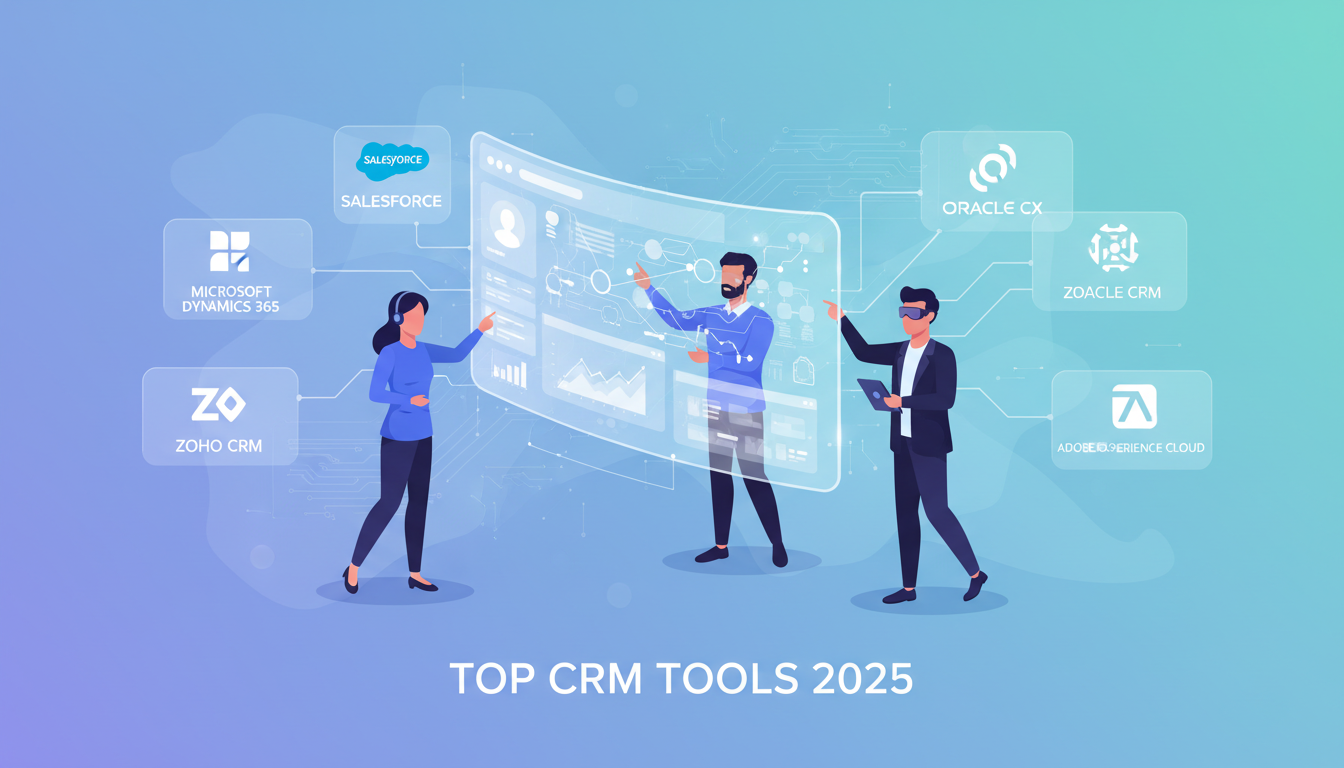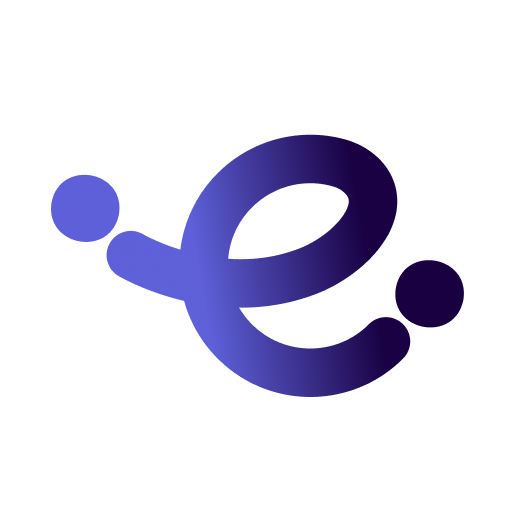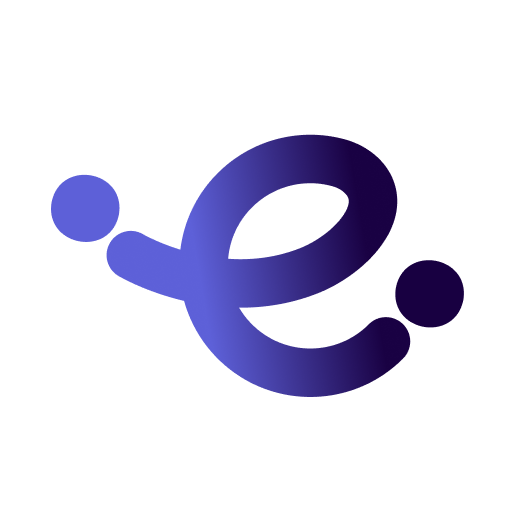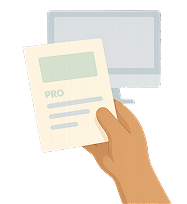What is Lead Generation?

Lead generation is the process by which the interest of a customer in a particular product or service is aroused with the ultimate motive of turning that interest into a sale. It’s the process of finding and attracting possible clients using various methods, including online lead generation techniques like search engine optimization, email marketing, social media marketing, content marketing, and more. Once the interest has been captured, businesses guide prospects through the sales funnel, where they are taken care of through targeted messaging and personalized follow-up communications. Effective lead generation requires continuous optimization. Continuous monitoring of the performance with tools such as CRM systems and analytics also prompts its improvement, and it eventually develops revenue and expands the business.
In summary, lead generation involves attracting and nurturing potential clients to convert their interest into sales.
Why is Lead Generation Important?
Drawing clients to the business is the most important aspect of any business. At this point, lead generation takes center stage. Generating leads is vital as it is the backbone of expansion and income for a company. A business generates leads in order to find new clients who may be interested in its products or services and attract them. Lead generation also enables businesses to identify their target demographic and place focus on them. They could also build lifelong clients by direct communication. Also, a business will be able to stay competitive if it acquires new customers at regular intervals by engaging itself in the task of generating leads on a regular basis and by maintaining its existing customers. Last but not least, businesses can also optimize and improvise various lead generation strategies to acquire desired results with the use of information obtained from generating leads.
Lead Generation in Marketing

In marketing, lead generation is very critical. A well-planned lead generation campaign can drive potential customers toward a brand. There are a couple of very critical components that sellers use to attract customers. Through the generation of engaging and informative content for readers, like blogs and articles, readers are instilled with confidence, giving out their personal information willfully. Collection of contact details enables the companies to communicate with the potential customers personally through calls, emails, or other contact modes. Besides, SEO techniques are also very instrumental in lead generation. Such programs create backlinks, get more website traffic, and optimize content with the appropriate keywords, thus attracting potential leads. Pay-per-click(PPC) helps capture the lead searching for similar products or services through ad placing across search engines like Google. Other effective ways to generate leads are through email and social media marketing, hosting webinars and events, and many more. These myriad approaches will help sellers come up with a detailed plan and think over it to attract, engage, and close prospects as clients. Lead generation is a part of an effective marketing plan that allows the promotion of company expansion and ensures the constant flow of new customers.
Lead generation is vital for business growth, helping attract and convert potential clients through targeted marketing strategies.
What is a Lead Magnet?

In marketing, the phrase used to acquire contact information for a free product or service is a lead magnet. The primary purpose of a lead magnet is lead generation by providing an incentive to website users to give their contact information so that a company can follow up on those leads and turn them into customers. A good lead magnet either satisfies a need of the customer or solves a problem. This is a source that provides an exact solution to needs or situations. Be it a short read or a short video for an effective lead magnet, the source is easily accessible and usable to the audience.
The lead magnets will take many different forms. Examples might include e-books, webinars, free website or platform trials, discounts on specified goods and services, resource libraries, or access to premium material not available to the general public. With lead magnets such as those, a great deal of focus is brought to the visitors; they are then asked to provide their contact information, in exchange for accessing the lead magnet. In this way, a business can further move leads down the sales funnel by offering them personalized communication, offers, and more material in exchange for their contact information. A product qualified lead (PQL) is someone who has actively engaged with a product, such as through a free trial. Finally, properly nurtured, a lead will become a paying customer.
Types of Leads: MQL vs. SQL
-
MQL: A marketing qualified lead (MQL) is a moderately qualified lead, one that fits at least one or more of your buyer personas but isn’t quite there in terms of readiness to buy. Sure, they are interested in your products and services; however, you really have to do more in trying to get them to buy, since whatever you are doing now isn’t good enough to make them your loyal customer.
-
SQL: A sales qualified lead (SQL) is a prospective customer who expresses interest in your business as a likely provider of that purchase, and, in addition, intends to make that purchase. They express their readiness to engage in a sales engagement through requesting pricing information, showing great interest in your product or service, or expressing a specific need or problem which your product or service can solve. Lead scoring helps businesses identify which leads are most likely to convert into customers by assigning them numerical values based on their behaviors and engagement levels.
Difference Between MQL & SQL
|
Aspect |
MQL (Marketing Qualified Lead) |
SQL (Sales Qualified Lead) |
|
Definition |
Leads that have shown interest in marketing efforts but are not yet ready to buy. |
Leads that have been vetted further and are ready for direct sales engagement. |
|
Stage in Funnel |
Middle of the funnel (MOFU) |
Bottom of the funnel (BOFU) |
|
Source of Lead |
Generated through marketing campaigns such as content downloads, webinars, or email sign-ups. |
Generated through direct interactions, deeper engagement, and qualification processes. |
|
Qualification Criteria |
Based on demographic, firmographic data, and initial engagement metrics (e.g., email opens, content downloads). |
Based on further interactions, sales calls, specific needs, budget, and decision-making ability. |
|
Engagement Level |
Has engaged with marketing content but not yet ready to be contacted by sales. |
Actively showing interest in making a purchase and willing to engage with sales. |
|
Actions Taken |
Consumes content, subscribes to newsletters, attends webinars, downloads eBooks. |
Requests demos, attends detailed product presentations, engages in sales conversations. |
|
Nurturing Required |
Needs nurturing through additional marketing efforts to move further down the funnel. |
Requires direct sales follow-up and personalized sales pitches. |
|
Examples |
Someone who downloaded a whitepaper or signed up for a webinar. |
Someone who requested a product demo or pricing information. |
|
Handoff Process |
Marketing team hands off to the sales team once the lead meets the MQL criteria. |
Sales team takes over to conduct further qualification and attempt to close the deal. |
|
Primary Goal |
To educate and engage the lead, preparing them for sales interaction. |
To convert the lead into a paying customer. |
How to Generate Leads?

Basically, lead generation is central to business growth. It means attracting and identifying people who may be potential customers for your products or services. Describe your ideal buyer to learn about their needs and preferences and then create a value proposition that outlines what really sets your product apart from all the others. Engage them with good quality content created and shared relevant to their pain points or interests. Use lead magnets—either downloadable assets or some sort of offer—to capture email addresses from your website visitors. Follow up on an individual level with captured leads by nurturing them in order to build relations and move leads through the sales funnel. Of course, this will help increase your prospect pool, but it will also bring to light the actions of your audience for the betterment of your marketing strategies and improvement in conversion rates. Using a lead generation tool can help businesses capture and manage potential customers effectively, streamlining the lead generation process and enhancing conversion rates.
Lead Generation Strategies
-
Paid Advertising: Paid advertising is a way of promoting a good or service through a number of websites, social media platforms, and search engines. In terms of lead generation, paid advertisements could be one of the most effective techniques for an organization seeking to reach a large audience within the shortest time and generate prompt leads. You can generate leads immediately using the paid advertising strategy. It is a quick method of lead generation. You can also track the performance of your campaigns and ads. With client feedback, you will be in a position to implement changes within a quick frame of time and analyze their eventual effect on your target audience.
-
Search Engine Optimization: An effective SEO strategy will render your website more visible for search queries with business-related keywords, which your target audience may have been using. You can optimize your website in such a way that it becomes possible for search engines to send organic traffic to your website. SEO is, hence, one of the most powerful lead generation techniques, as it helps people discover your website for the very first time and effectively turns a large portion of such visitors into leads.
-
Email Marketing: Email marketing is effective within the lead generation process because it provides a business with the ability to communicate directly with potential customers, moving them through the sales funnel. It is a great idea to build up the conversion by targeting the right groups with relevant information in the email through segmentation by demographics and involvement. You can also make the process more engaging and increase the bonding with the customers by using personalized email content addressing the receiver by name and their need or interest. Good email marketing will keep your leads engaged and interested in their journey through information that will move them closer to becoming a customer.
-
Content Marketing: Content marketing is concerned with the creation and sharing of relevant, valuable, and consistent content at the epicenter of lead generation. In other words, it's through the preparation of this high-value content—ebooks, whitepapers, or webinars—that there can exist an exchange wherein visitors are likely to give contact information in exchange for information that solves their problems. You can also see huge numbers of customers coming if you publish informative and insightful blog posts regularly that answer the problems of your audience.
-
Social Media Marketing: It is easy to generate leads through social media marketing since one gets to interact and engage with one's target on platforms used frequently. You can share strategic content to drive traffic toward your website and capture leads. You can share any valuable content, like blog posts, lead magnets, or other useful content, on the social media platforms—including Instagram, Facebook, LinkedIn, or Twitter. You can share your content and engage with your audience by responding to questions in the comments or through direct messages for building relations and asking them to know more about your products and services. Social media marketing amplifies your lead generation efforts with better reach and more interactive and instant engagement with prospects.
Common Lead Generation Challenges
Leads aren’t turning into customers: One of the most unpleasant problems in creating leads is not actually making them into paying clients. A bad nurture or follow-up makes the lead lose interest or migrate to competition. Additionally, misalignment between marketing and the sales team—one that wastes money and time if the leads your marketing efforts bring in aren’t properly checked for quality. Implementing a thoughtful lead nurture plan can significantly raise conversion rates. Good communication between the marketing and sales departments is also necessary to ensure the lead handover is smooth and that both parties are in agreement with what a qualified lead consists of.
Lead generation demands large budgets: Effective lead generation usually requires huge financial investments, which may become burdensome, especially to a startup or small business. There are many ways for effective lead generation, and each has its price. Because of this financial burden, small firms cannot compete with large ones who have the resources and people to invest in lead generation. Then, companies can focus on cheaper ways of lead generation, such as SEO, social media engagement, and content marketing—something that will not help the company right now but might help it be more sustainable later on. Indeed, even with a limited budget, businesses can still squeeze the most out of lead generation if they are equipped properly in terms of budgeting and measuring success.
Keeping Up with Technology: Carrying on a business in the world of technology is never smooth. For a marketer, it’s not easy to keep updated with new technologies and methods ever sprouting, and to integrate them efficiently into their lead generation strategies. The business has to put in time for continuous learning and upskilling if it wishes to remain competitive in the market. It is necessary to include periodical performance reviews and changes in the tech stack of the business according to new trends.
Targeting the Right Audience: If there is no precise targeting of the audience, then most of the marketing efforts will be completely wasted on people who are less or not at all interested in buying your product or service, hence creating low conversion rates and ineffective use of resources. A good business must be based on deep market research regarding the demographics, preferences, and pain points of the target audience. One way to do this is through the application of data-driven targeting methodologies, such as behavioral segmentation, together with personally addressed marketing campaigns in order to perfect the focus and ensure that marketing efforts reach the most relevant prospects.
Creating valuable content: Content is really at the heart of so many lead generation strategies, though crafting content that strikes a chord with the target audience and provokes action is multi-dimensional in its challenge. Content should not only be engaging and relevant but also reflect value to an audience in a meaningful way by solving certain needs, resolving pain points, and addressing interests. This is going to require a great deal of understanding of the audience and a very well-worked content strategy across the different stages of the buyer’s journey. It will call for the use of key metrics that relate to the performance of content at regular intervals; considering some metrics, such as engagement rates, lead generation rates, and conversion rates, in understanding what works best and where improvements are needed.
Best Lead Generation Tools and Softwares
-
HubSpot: Customer relationship management (CRM) tool
-
Google Ads: Paid advertising tool
-
Facebook Ads: Paid advertising tool
-
LinkedIn: Social media marketing tool
-
Facebook: Social media marketing tool
-
TikTok: Social media marketing tool
-
Instagram: Social media marketing tool
-
Mailchimp: Email marketing and lead generation tool
-
SEMrush: Search engine optimization tool
-
Intercom: Chatbots and conversational marketing tool
-
Demio: Webinar software
How to Use Social Media for Lead Generation
Social media platforms are capable of helping you generate several leads for your business. Basically, social media is the way of life today. People who know how to use it to their advantage and the advantage of their companies achieve a myriad of things. There are many social media networks available, including Instagram, Twitter, and Facebook. You should choose the correct solution for your organization before you start using them. To do that, you have to analyze your clientele and find out which platforms they use more often. You then need to come up with engaging and informative content to offer your audience after settling for the correct social media network. You can make some engaging pictures and videos, accompanied by posts, that will attract clients to your business. You retain what their interests and problems are when generating this kind of content. You can post ads to reach more people on these platforms by using sponsored social media ads.
Sales teams play a crucial role in following up on leads generated through social media, ensuring that these leads are nurtured and converted into customers.
Now you have implemented all these processes, and it’s time to engage with your clients. This has to be followed by keeping the customers abreast of all activities constantly after catching their attention. You can achieve this by responding to messages or even comments on your posts. You can also carry out live activities like question-and-answer sessions to communicate with your probable customers in person and clarify all their queries there and then. For each one of these processes, you should track how well your performance went at the end. You can help yourself out with a social media analytics tool in that direction. It is through strategic use of social media that you would attract potential customers, nurture them with the content and activities relevant to them, and finally turn them into qualified leads for your business.
Use social media for lead generation by targeting the right platforms, creating engaging content, using ads and interacting with followers.
Metrics for Measuring Lead Generation Success
-
Conversion Rate: This is a metric showing exactly how much of the traffic going to your site is being converted into leads. A higher conversion rate means your target market is reacting more positively toward your marketing and engagement.
-
Return on Investment (ROI): This ROI is represented by the net earnings of leads compared with the cost of acquisition. A positive ROI will therefore imply that the lead generation approached is profitable; inversely, a negative ROI will suggest that reassessment of the budget and strategy is needed.
-
Cost Per Lead (CPL): CPL stands for Cost Per Lead, a metric that measures just how cost-effective your marketing activities have been at generating fresh leads for your sales force. This measure helps estimate the effectiveness of your marketing spends and initiatives.
-
Lead Volume: Lead volume is the total amount of leads created within any period. It gives the big picture of the reach and visibility of your marketing activities.
-
Lead Source Performance: This measure explains how certain campaigns or channels really bring in leads. You will be able to know those sources that build the biggest and steadiest leads, hence letting you maximize your marketing effectiveness by putting resources into those that perform best and working on enhancing the underperforming.
GDPR and Lead Generation: Compliance Tips

The General Data Protection Regulation is an all-encompassing regulation on data protection and individuals' privacy within the European Union and the European Economic Area. The General Data Protection Regulation is going to drastically affect how companies obtain, process, and use personal information in their lead generation activities. Here are a few critical tips for businesses to provide compliance to these regulations:
-
Get Explicit Consent: GDPR explicit consent is about making sure an individual knows and agrees to the way in which his or her personal data is going to be collected, processed, and used. It should be at least as easy to withdraw the mechanism for giving consent as to give in the first place, so individuals know they are always in control over their personal information.
-
Be Transparent: Transparency is at the heart of the GDPR, which enforces openness and clarity in organizations concerning how they collect, store, and use personal data. At a larger level of applicability, transparency will not only make an organization GDPR compliant but also help to improve the relationship with clients, who do appear to be more informed and concerned about privacy today.
-
Implement Data Minimization: It will be one of the principal considerations for organizations to collect only such personal data as is strictly necessary for a particular purpose. In other words, the GDPR is encouraging businesses to collect less data and capture only the data relevant and needed in attaining the organization's objectives.
-
Proper Storage of Data: The GDPR is very much aware that every controller or employer should, therefore, ensure proper technical and organizational measures to safeguard personal data against unauthorized access, loss, or even its complete destruction. If focused on secure data storage, the requirements under the GDPR will not only be complied with, but more importantly, the reputation of the business and customer trust that is extremely vulnerable in the case of a breach will be protected.
-
Keep Detailed Records: The GDPR enforces that organizations "keep a record of their data processing activities in detail." In essence, this documentation can be used to prove compliance and, more importantly, that an organization has taken the necessary steps in the process of protecting personal data. Elaborate record-keeping, therefore, helps ensure compliance with the GDPR obligations and allows for an overview of data practices that will enable organizations to keep pace in case of potential compliance issues.
-
Stay current on the GDPR guidelines: One needs to keep themselves updated about the guidelines issued by the GDPR, since the regulatory environment continues to change. This, in fact, makes for a well-informed and proactive business that reduces the potential of non-compliance and helps retain consumers' trust in a very fast digital environment.
Case Studies: Successful Lead Generation Campaigns
-
HubSpot’s Inbound Marketing Campaign: HubSpot is a company that holds a top position when it comes to inbound marketing. They literally changed how companies do their sales and marketing. At one time, they ran an inbound marketing campaign to attract more people, convert them, and turn them into passionate customers for their business. That's when marketers used some strategies, one of which was content creation with the aim of helping marketers get better at their craft by providing free educational material in the form of eBooks, webinars, and blog posts. Besides, HubSpot performed an in-depth search of keywords that were most valuable to its target demographic and yielded high search volumes. Also, HubSpot performed this segmentation through its tailored content and own offers for its created leads, basing this on different stages of interaction and on their behavior modes. Personalized email marketing was undertaken to nurture the leads, who eventually graduated into paying customers.
-
American Express’ Small Business Saturday Campaign: Small Business Saturday, a shopping holiday observed on the first Saturday following Thanksgiving in the US, was introduced by American Express in 2010.Their mission was to support local companies. Small businesses were urged to register on their platform in order to receive free marketing assistance and promotional materials. The campaign saw high levels of engagement, with many different channels utilized to push out the campaign, from social media and email to partnerships. What made this initiative so effective was that it did more than just drive leads for American Express—it helped rank the company more highly in the eyes of small business owners.
What is Demand Generation?

Demand generation is an education-driven and long-term approach where high value is placed on contacting and educating consumers. Other definitions regard it as a wider category of activities aimed at increasing general knowledge and interest in a brand or its product, while lead generation is mainly focused on getting contact information from potential buyers. It is mainly aimed at driving general awareness and engagement with the brand or product.
Best Demand Generation Tools and Softwares
Technologies and software that generate demand are generally accessible.The following are a few of them, along with their areas:
-
HubSpot: Marketing automation and CRM
-
Eloqua: Marketing Automation
-
ZoomInfo: Sales and Marketing Intelligence
-
SEMrush: SEO and SEM tool
-
Ahrefs: SEO tool
-
Hootsuite: Social Media Management
-
Mailchimp: Email marketing
-
Google Analytics: Web Analytics
-
Marketo: Marketing Automation
-
Demandbase: Account-Based Marketing
Demand Generation in Marketing
Demand generation is the proper plan to allow a company's services or brand to become more known and in demand. Marketing techniques include paid advertising, webinars, events, social media marketing, email marketing, search engine optimization, search engine marketing, and content marketing. These various platforms ensure the visibility of the brand to the targeted market, its relevance, and making it interesting.
To sum up, effective demand generation relies on aligning sales and marketing, understanding the audience, creating targeted content, utilizing automation, building long-term relationships, and leveraging metrics.
Best Practices of Demand Generation

-
Align Sales and Marketing: Successful demand generation requires the right collaboration between sales and marketing team. As aligned teams, they are then able to work on developing just one strategy targeted at the right audience with the right messages.
-
Understand Your Audience: At the core of any effective demand generation strategy is knowing your audience. This only succeeds if buyer personas—detailed and indicative of key characteristics, needs, and behaviors of ideal customers—are developed. Knowing your audience allows personalization of messaging, content, and campaigns around pain points and preferences.
-
Create Targeted Content: Content is truly the heart of demand generation. One needs to communicate effectively regarding the content, focusing on solving the pain points and interest of the target audience. All this can be achieved by making sure that a focused development of the content is done against various stages of the buyer's journey.
-
Implement Marketing Automation: Marketing automation is a strong tool for making your demand generation tasks smooth. By automating things like email marketing, lead nurturing, and social media posting, you really drive more on strategy and less on execution.
-
Focus on Long-Term Relationships: Demand generation does not only target acquiring new leads but long-term relationships with the customers. Balancing customer retention and loyalty would enable you to maximize lifetime value. This calls for providing continued value through regular communication, personalized offers, and stellar customer service.
-
Offer Free Trials: Free trials and demos are a surefire demand generation strategy. With free trials, prospective clients can try out your product and see its value without risking anything before buying. This reduces the friction in conversion and helps build trust.
-
Leverage Metrics: Effective demand creation requires decision-making based on the data. Tracking and analyzing leading indicators of performance—things like lead conversion rates, acquisition costs, and ROI—allows you to truly understand if your marketing efforts are successful and where improvements can be made.
-
Continuously Educate and Train Your Teams: Keep your marketing and sales people trained and up-to-date at all times. Provide them with ongoing education through webinars, workshops, and courses so that they are current with the best practices. With a well-trained crew at your service, demand generation activities will be easier to execute, changes will be easier to adapt to, and corporate growth will be fostered.
Demand Generation vs. Lead Generation
|
Aspect |
Demand Generation |
Lead Generation |
|
Definition |
A strategy focused on creating interest and awareness in a product or service to build long-term demand. |
A process aimed at identifying and acquiring potential customers (leads) interested in a product or service. |
|
Primary Goal |
To drive overall awareness, interest, and engagement with the brand or product. |
To capture contact details of potential customers and qualify them for sales. |
|
Scope |
Broad and focuses on building brand recognition and market presence. |
Narrower and focuses specifically on collecting leads for sales follow-up. |
|
Objective |
Generate interest and build a funnel of potential leads through various marketing activities. |
Convert potential leads into sales-ready prospects through targeted strategies. |
|
Strategy |
Includes content marketing, social media campaigns, webinars, and other tactics to build interest. |
Includes tactics such as landing pages, lead magnets, and lead capture forms to collect information. |
|
Metrics |
Brand awareness, website traffic, content engagement, and overall interest. |
Number of leads generated, lead quality, conversion rates, and cost per lead. |
|
Content Focus |
Educative and informative content that addresses the needs and pain points of a broad audience. |
Targeted content that encourages potential leads to provide their contact information. |
|
Engagement |
Engages a wide audience and nurtures them through the buyer’s journey. |
Directly engages with individuals who have shown some level of interest. |
|
Sales Funnel Stage |
Top of the funnel (TOFU): Attracts and creates awareness. |
Middle to bottom of the funnel (MOFU to BOFU): Qualifies and converts leads into prospects. |
|
Tools Used |
Broad marketing tools such as SEO, content marketing, and social media advertising. |
Lead capture tools such as landing page builders, CRM systems, and email marketing. |
|
Example Activities |
Hosting educational webinars, publishing whitepapers, and running brand awareness campaigns. |
Offering free trials, collecting email sign-ups through lead magnets, and using PPC ads to capture contact info. |
Discover the best digital marketing solutions. Explore Edvido's top firms.
F.A.Q. About Lead Generation & Demand Generation
What is Inbound Lead Generation?
Inbound lead generation is a form of content-based lead generation. A business will provide its clients with some engaging informative material in hopes of attracting them to their brand. It organically attracts clients and more visitors to the website through social media marketing, SEO, and content creation in forms such as blog posts, white papers, and e-books. Discover how Edvido can help you create powerful inbound lead generation strategies tailored to your business needs. Learn More with Edvido.
What is Outbound Lead Generation?
In outbound lead generation, potential clients are called proactively to trigger their interest. It is much more proactive and direct than inbound lead generation. A business makes an approach to communicating with the potential customers instead of passively waiting for them to visit their website or social media pages. Among the most frequently used strategies in the creation of outbound leads are cold calling, email marketing, direct mail, and advertising.
What is a Lead Generation Funnel?
A lead generation funnel illustrates the way a potential consumer is molded and becomes a paying customer. All funnels have their stages, which are always wide at the top and get narrower towards the bottom. That means it is wide at the top, narrow in the middle, and at the bottom it has the consumers. Businesses can actually tailor their marketing efforts according to the lead generation funnel's ability to help them determine where their potential clients may be in the process of making a purchase.

















